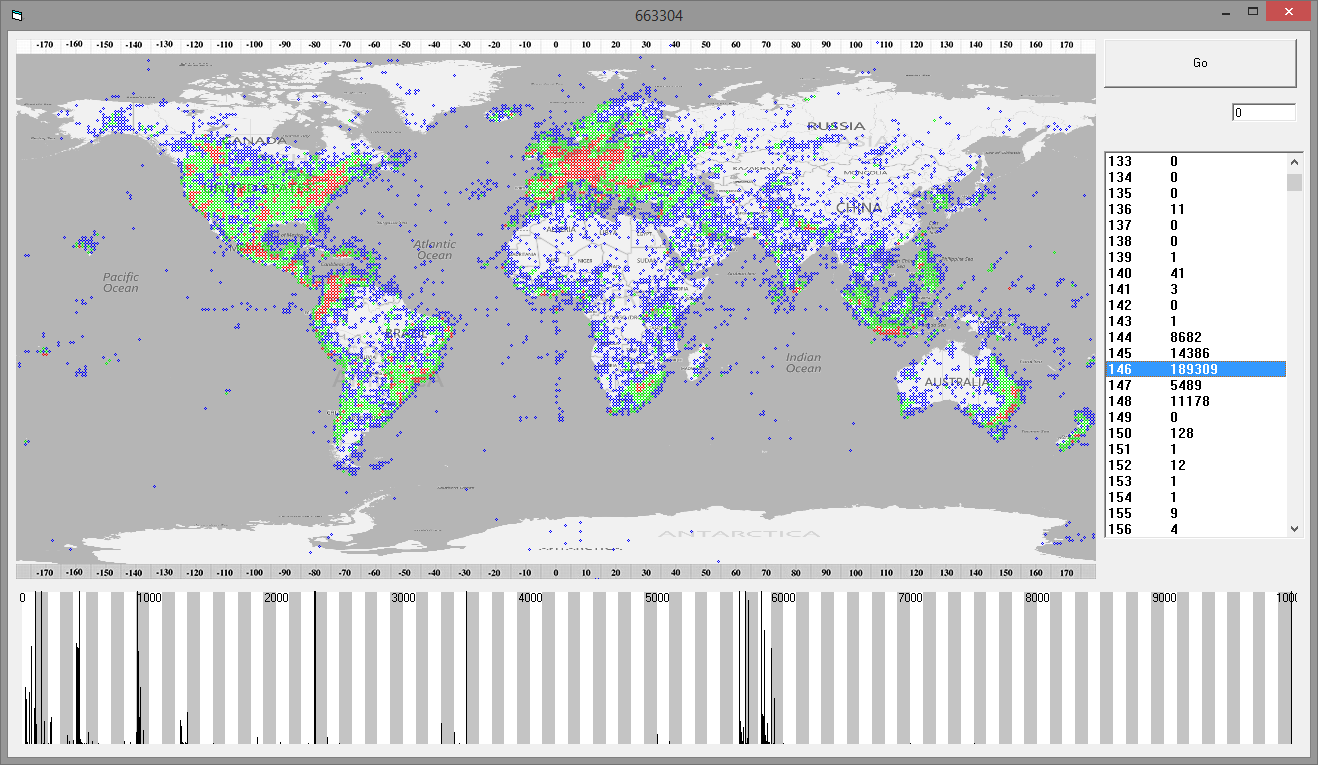|
Radio Mobile Online is a development of Roger Coudé in which he adapted the engine in Radio Mobile so that it will operate on the web as a online RF tool.
The advantage of the online version over the traditional program that runs on a PC is that the user is not troubled by the administration of geodata like ground height of map data. All is setup an ready to use in Radio Mobile online.
The online version has some limitations also: it depends on an internet connexion, and it is limited to amateur radio bands. But the nice things are:
- Run from your internet browser, on any software platform such as Windows, Linux, Mac, and devices like Ipad, smart phones, etc.
- User entries have been simplified to a minimum
- Positioning simplified and improved thanks to GoogleMap API
- You no longer need to download huge amount of data and find the proper source for your area
- The best data available is used worldwide in a seamless transition
- Only a very small amount of data is exchanged between the server and your browser
- It is multithread capable (Actually limited to two threads per user)
- The coverage calculation are much faster than the original program, producing pixel wise images.
- The outputs of the program are nice and can be imported to your computer
- All your studies are kept on the server
To use Radio Mobile Online the only thing required is a subscription by registration to the tool.
 Similar to the situation with Radio Mobile there is no real documentation avaialable from the author. To cover this issue a website with documentation is available at http://radiomobileonline.pe1mew.nl Similar to the situation with Radio Mobile there is no real documentation avaialable from the author. To cover this issue a website with documentation is available at http://radiomobileonline.pe1mew.nl
Radio Mobile online can be found at http://www.ve2dbe.com/rmonline.html
 Both documentation- and the Radio Mobile online site are under development! Both documentation- and the Radio Mobile online site are under development!
As of this incomplete information or invalid operation can occur. Please take note of the disclaimers.
Introduction
Radio Mobile Online is a radio wave propagation prediction tool dedicated to amateur radio. It uses digital terrain information and a mathematical model to simulate radio transmissions between two fixed sites (radio link) or between a fixed site and a mobile (Radio coverage).
The digital terrain information comprises two databases: elevation and land cover. Those databases are located on the server and represent a total of 198 GigaBytes.
The mathematical model predicts the radio transmission performance based on the following entries:
- Transmitter site power
- Transmitter site line loss
- Transmitter site antenna gain
- Transmitter site antenna type (for coverage only)
- Transmitter site antenna azimuth (for coverage only)
- Transmitter site antenna tilt (for coverage only)
- Transmitter site antenna height
- Transmitter site latitude
- Transmitter site longitude
- Transmitter site ground elevation
- Elevation data records between the transmitter and the receiver sites (up to 2000 records)
- Land cover data records between the transmitter and the receiver sites (up to 2000 records)
- Receiver site latitude (for link only)
- Receiver site longitude (for link only)
- Receiver site ground elevation (for link only)
- Receiver site antenna gain
- Receiver site antenna height
- Receiver site line loss
- Receiver site sensitivity (corresponds to the receiver threshold)
- Required reliability (The percentage of time where the signal must be above the threshold to consider a link to be liable).
- Color for a successful reception (for coverage only)
- Strong signal margin (for coverage only)
- Color for a successful reception with a strong signal (for coverage only)
- Transparency of the ground overlay (for coverage only)
The mathematical model is a mix of the ITM model, the two rays method, and the land cover path loss estimation.
The ITM model is a US government publication, public domain. The two rays method and landcover path loss estimation are based on my 40 years experience in radio propagation.
For a Radio Link study, the output of the mathematical model predicts success if the fade margin of the received signal is greater than zero. For a Radio Coverage study, a colored plot over a topographical map is produced.
For more information see:
Popularity of Radio Mobile Online
Radio Mobile Online is a popular tool to use. Statistics show that in the periode 2012 to 2015, 663304 studies have been performed and that 26198 acoounts have been created.
All studies are been displayed on the map below.

|